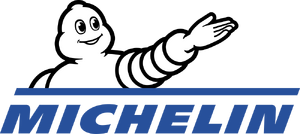Author: Martin Trust Center

This guest post was written by Seth Pack, Chief Strategy and Innovation Officer at Michelin Mobility Intelligence, one of the Trust Center’s corporate and academic members.
Having worked for nearly fifteen years in corporate innovation and strategy, Seth holds a bachelor’s degree in computer science, a master’s degree in business management, and graduate certificates in strategic leadership, entrepreneurship, and innovation.

In today’s fast-paced and ever-evolving landscape, innovation is the driving force that separates market leaders from followers. In taking a moment to reflect upon the companies that have had the greatest and most lasting impact on the world, these companies did not just follow trends – they created them. In doing so, they disrupted traditional industries, reimagined user experiences, and redefined the way we live and work.
Building an innovative organization is not just a catchphrase; it is the catalyst that propels organizations forward and empowers them to leapfrog their competitors. It is the reason we no longer wait in lines at video rental stores, why we can catch a ride with a tap on our smartphones, and why artificial intelligence is increasingly becoming an integral part of our lives.
But what truly fuels innovation? How do some organizations consistently generate groundbreaking ideas while others struggle to keep up? As someone who lives in the world of corporate innovation, I’ve come to understand that the secret ingredient is culture. It’s the culture that either stifles creativity or nurtures it; that either favors the status quo or champions bold experimentation.
Below I have highlighted a few essentials that allow some to shine, while others remain on the sideline.
Experimentation and Failure
The path to groundbreaking ideas is not a straight line; it is a series of twists, turns, and unexpected discoveries. Experimentation is how companies move into uncharted territory and uncover new opportunities.
However, experimentation is not just about success, it is mostly about failure.
Traditionally, most organizational cultures view failure in a negative light, but for innovation, failure is the greatest teacher we could ever have, and it should be worn as a badge of honor as it is a testament to being someone willing to take a chance, challenge the boundaries, and take on the status-quo. To facilitate this at an organizational level, leaders must cultivate a culture that does not stigmatize failure in innovation but celebrates it. And this is done because it is understood that failure is an integral part of the learning process, providing invaluable insights that pave the way for future success. This approach encourages employees to take risks, try bold ideas, and stretch their creative muscles without the fear of retribution.
Innovative companies often embrace the concept of “failing forward.” In doing so, they don’t view failures as dead ends, they see them as stepping stones towards improvement. When an experiment does not yield the expected results, these companies encourage teams to analyze the outcomes, extract valuable insights, and pivot their strategies. This iterative approach turns setbacks into opportunities for growth and refinement.
Another hallmark of experimentation is rapid prototyping. Instead of spending excessive time perfecting plans on paper, these organizations focus on creating tangible prototypes or minimum viable products (MVPs) that can be assessed in the real world. This approach allows them to gather real-time feedback from users, identify flaws, and make informed adjustments. Mike Tyson is attributed with saying “Everyone has a plan until they get punched in the mouth”.
While I am without a doubt that this is true for boxing, I am equally confident of its relevance to business, especially when it’s an innovative initiative. No matter the intellect of the team or collective expertise, nor the amount of time they spend anticipating and mitigating points of failure, perfect plans are unicorns. They do not exist. This is not to say that plans shouldn’t exist; they should! However, companies are easily tempted into placing too much energy into planning and mitigating. For innovation, the plan should be to learn by listening and doing and to follow a methodology for doing just that.
Embracing a Balance in Risk
Balancing risk is a major challenge large companies face when pursuing innovation. Large corporations cannot have the risk profile that small startups do. They face legitimate and challenging demands from their customers and shareholders, demanding that they invest in things they have confidence in and that they ultimately do not have to depend on if things turn south.
Linked to this is a trap that organizations often fall into: they want to be innovators and see exponential growth for their initiatives, but they think they also want to de-risk their most innovative initiatives. In other words, they think they can have a moonshot without the associated high risk. I would argue that this type of thinking is a fallacy that ignores the reality that companies should balance their portfolio and at times hedge their bets by pursuing advancements of varying risk profiles in parallel with one another.
Maintaining and financing a portfolio of initiatives of varying risks and amount of investment – some significant in size – requires a level of discipline, long-term thinking, and resolve by the organization throughout the good times and the bad, especially by its most senior management.
Disciplined Entrepreneurship
I admit to stealing this title from the book written by my friend at MIT, Bill Aulet. As Bill has articulated, this idea is not just for small startups. Indeed, corporate entrepreneurs, sometimes referred to as intrapreneurs, are entrepreneurs too! For those who have read the Disciplined Entrepreneurship book or know Bill, you know that his book talks about the steps entrepreneurs should take to create and scale a business, and these principles can apply to large businesses with innovative ambitions. Through his more recent talks, Bill debunks the idea that innovation and entrepreneurship are somehow this playground of creative ambiguity but not serious business.
Rather, I would argue that those who are serious about innovation are serious about the methodology and competencies that surround it. Ever-increasing demands are leading innovation teams to be at the cutting edge of building and scaling businesses while possessing a mastery of relevant business models, solution architectures, and technologies.
Some of the most compelling innovation teams – teams that work exclusively on innovations – have their own KPIs! In fairness, these aren’t KPIs as you’d see for an IT operations team, but some examples include:
- tracking the percentage of projects that fail (an attempt to measure whether the teams were pushing boundaries),
- tracking initiative cycle time (rapid prototyping should be rapid, right?),
- the number of pivots an initiative took before it was concluded (to ensure the team explored and experimented in several different ways).
I’m a believer in these types of KPIs for innovation and think they can help keep teams true to purpose over time. As with any KPI, they should be tailored carefully and watched to protect against unintended consequences – as KPIs have an awful tendency of driving behavior, sometimes at the expense of the intention.
Diversity of Thought and Competencies
One of the most significant innovation challenges is groupthink – the tendency for teams to conform to a consensus and avoid dissenting opinions. Teams need healthy debates to challenge assumptions and refine ideas. This dynamic exchange is critical to preventing stagnation and encouraging the exploration of unconventional ideas. To accomplish this, a tapestry of perspectives should be represented by composing a team of individuals with varied backgrounds including cultural norms, life experiences, and educational backgrounds. These varying viewpoints can and will spark a fusion of ideas that lead to innovative solutions.
It is not without reason that many believe innovation teams are where only creative people – with the trendiest sneakers and t-shirts – work. This generalization does a severe disservice to the actual needs of innovation and creates a degree of exclusiveness, rather than inclusiveness. Indeed, innovation needs “the creatives”. They are often a driving force that is the first to challenge the status quo and offer a crazy way that just might work. But equally important are many other professional and personality types.
On the professional side, innovation needs technology, marketing, engineering, finance, and more. And on the personality side, it needs extroverts AND introverts. The combination of these various professional and personality types will supply a blending of strengths and capabilities, as well as a balance of momentum, cohesion, and sustainability.
Indeed, it is a place for almost everyone. Because a culture of innovation is difficult to cultivate and sustain over time, the composition of teams is of paramount importance. I believe people can generally be of two camps – those who have a growth mindset – ready and willing to explore and embrace change; and those who aren’t. I believe that even a single person without the needed growth mindset can have a disproportionately destructive effect on the team at large and must be avoided at all costs.
In evaluating candidates for innovation teams, we should always look for the best candidate according to traditional approaches. However, the search should also purpose to discover a candidate who brings something unique, fills a gap within the existing team, and enriches the team as a whole. After all, innovation is a team sport.
Staying Hungry
The drive to explore uncharted territories, to transcend established boundaries, and to courageously embrace the discomfort of uncertainty is the impetus that propels society forward. It’s a stance born from an unwavering dedication to progress – a recognition that today’s success is no guarantee for tomorrow.
Plato is attributed with the origin of the phrase ‘necessity is the mother of invention,’ a sentiment often seen in aspiring startups and beleaguered actors alike. Yet, mature organizations can find it challenging to recognize the urgency and the consequence of complacency. Thus, organizations must embrace the ethos of ‘staying hungry.’ This requires an unrelenting commitment to challenging their successes, and refusing contentment with the status-quo, irrespective of whether they’re in first or last place.
Conclusion
One thing is clear: Companies that thrive at the forefront are those that have mastered the art of fostering a culture of innovation. From nurturing risk-taking and embracing experimentation, to being disciplined in its execution of innovation, these organizations have laid the groundwork for transformative breakthroughs that shape industries and touch lives.
It is no simple task to create an environment where calculated risks are encouraged, where cross-functional teams come together to generate novel ideas, and where diverse voices reverberate. It requires commitment, leadership, and a shared belief in the power of innovation to drive change. It requires culture.


Follow